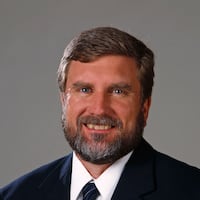The process is referred to as PDAC — the Priority Development & Advocacy Committee. That committee, led by the Dayton Development Coalition and local Chambers of Commerce, ranks local project funding requests submitted by businesses and agencies. The DDC says that “allows the Dayton Region to speak with one voice when seeking governmental and other project support.”
The committee ranked 52 of the 118 proposals from around the region (44%) as “priorities” — the highest level of support. Another 42 were graded as “recommended” projects, while the last 24 were listed as just having been “reviewed.”
“Maintaining a list of projects that are vetted and ready for funded helps position our region’s projects for funding when policymakers are looking to support economic development, transportation, health, education, or quality of life projects in our region,” said Jeff Hoagland, President and CEO of the Dayton Development Coalition.
Dayton Development Coalition officials emphasized that a high PDAC ranking can help a project’s chances of getting funded, but it’s no guarantee. The money these entities are lobbying for is state and federal funding, not money under DDC’s control.
The possibilities range from a project being fully funded, to getting partial funding, to getting nothing and having to make the case again as much as two or three years from now.
Shannon Joyce Neal, vice president of strategic communications for the DDC said the timeline starts quickly, as some projects could get funding through Ohio’s state capital budget early this year.
“Funding can come through multiple channels,” Neal said. “We share (the rankings) with our state and federal delegations. But we also encourage the groups who brought forth these projects to advocate too. We stress to them, they need to be able to go and make their case.”
PDAC’s value, Neal said, is that now an agency can tell decision makers, ‘my community has vetted this, has given the project a priority designation, and is going to support it.”
Priority projects
Defense sector
Of the 24 proposed projects in this sector, 13 of them (54%) were put at the “priority” level. Of those, the highest funding requests were a $30 million proposal from Air Camp Inc. for a STEM Talent Development Complex, a $20 million request from the Wright-Patterson Regional Council of Governments tied to future development at Wright-Patt, and a $12 million proposal from Wright State for the Aerospace Medicine and Human Performance National Center of Excellence.
Economic Development sector
Of the 20 proposed projects in this sector, 10 of them (50%) were put at the “priority” level. Of those, the highest funding requests were a $10 million city of Dayton request tied to the Wright-Dunbar Development Fund and a $6 million proposal out of Shelby County for the Wagner Business Incubator and Coworking Space.
Hospitals, health care, human services
Of the 20 proposed projects in this sector, 13 of them (65%) were put at the “priority” level. Of those, the highest funding requests were $5 million each for Wright State University’s Colonel Glenn Highway Health and Wellness Project, and the Montgomery County Commissioners’ Jail Health Care Unit.
Quality of Life sector
Of the 31 proposed projects in this sector, 11 of them (35%) were put at the “priority” level. Of those, the highest funding requests were a $7.5 million proposal from the Clark County Convention Facilities group for the Champion City Sports & Wellness Center; and $6 million for Sidney and Shelby County’s request tied to a Great Miami Riverway Recreational Trail extension.
Transportation, government services
Of the 23 proposed projects in this sector, 5 of them (22%) were put at the “priority” level. Of those, the highest funding requests were a $25 million proposal from the city of Beavercreek for the I-675 Grange Hall Road interchange project; and a $9.6 million request from the Miami Conservancy District seeking “critical repairs to the concrete walls of the Germantown, Englewood, and Taylorsville Dams.”
About the Author



